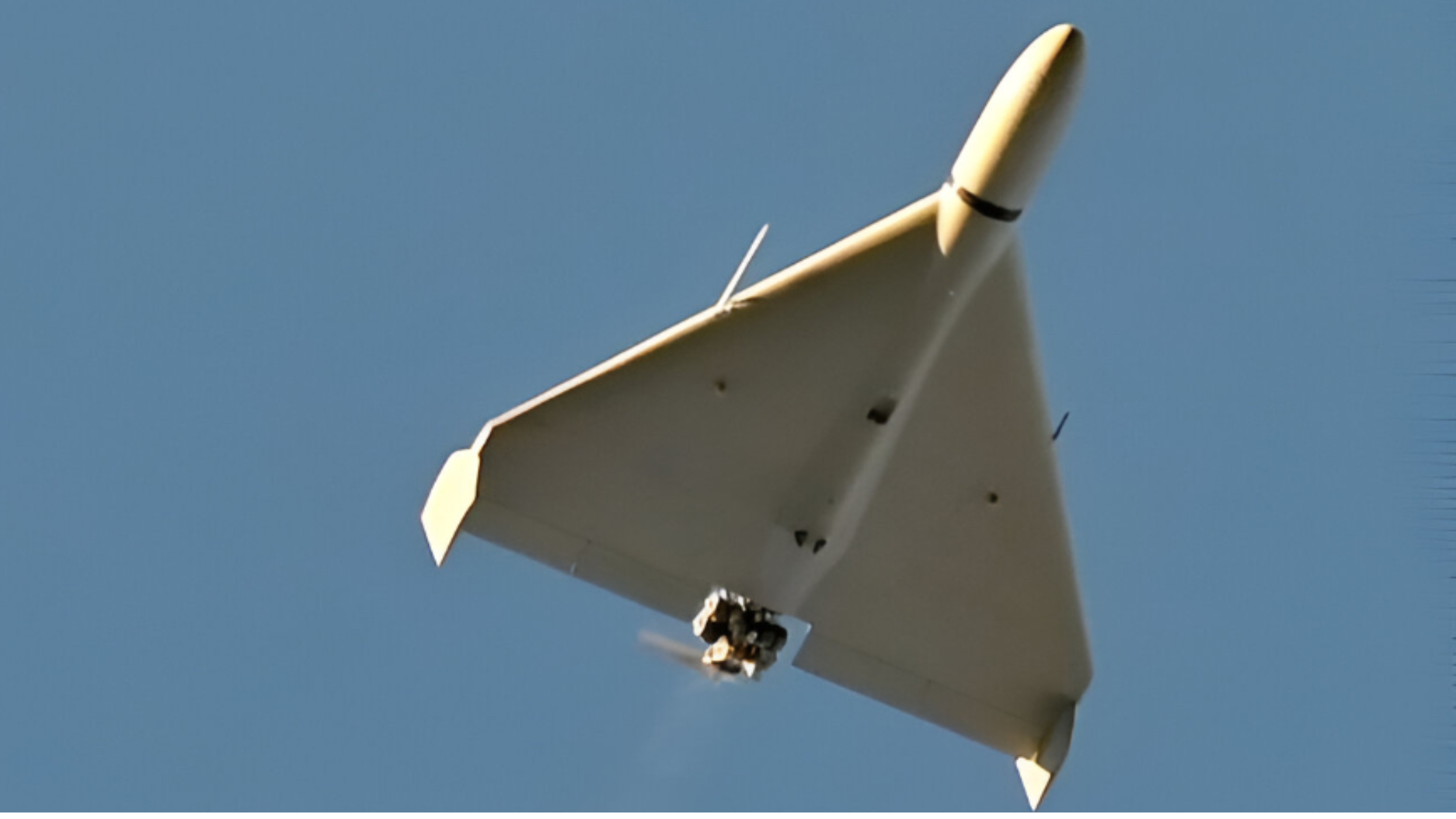AI-Enhanced Shahed Drone Reveals Deepening Iran-Russia Military Ties

A new variant of the Shahed-136 (Geran-2) drone, reportedly downed in Ukraine’s Sumy region earlier this month, has offered critical insights into the evolving nature of unmanned aerial vehicles (UAVs) and the deepening cooperation between Iran and Russia in the field of military technology. The latest information, revealed by Ukraine’s military intelligence agency GUR via the “Components in Weapons” portal, underscores a shift in how modern drones are designed—with growing integration of AI, upgraded guidance systems, and multi-purpose capabilities.
Shahed-136 MS Variant: AI Hardware and Video Processing Capabilities
The key highlight of the dissected drone is the inclusion of an Nvidia Jetson Orin minicomputer, known for high-performance computing tasks such as image recognition and artificial intelligence. This embedded AI hardware is typically used in robotics, autonomous vehicles, and edge computing platforms, suggesting a leap in the Shahed drone’s operational capabilities. The module processes video feed in real time, enabling the UAV to recognize targets based on preloaded imagery, assist in precise navigation, and potentially select targets autonomously during a mission.
This technical leap allows the drone to serve not only in a kamikaze role but also as a reconnaissance UAV, feeding back critical data to its operators. The same AI chipset has also been spotted in Russia’s domestically manufactured V2U attack drone, indicating a bilateral sharing of technological advancements between Moscow and Tehran.
Thermal Vision and Autonomous Targeting: Tactical Upgrades on the Battlefield
Another major enhancement in the new Shahed-136 MS series is the inclusion of an infrared camera. This optical device, believed to be of Russian origin or design influence, supports thermal targeting. It enables the drone to function in low-light or poor visibility conditions, which significantly expands its operational window. Thermal optics also allow the drone to detect hidden or camouflaged targets, improving mission success rates in contested zones.
Experts in drone warfare suggest that these features indicate a shift toward semi-autonomous loitering munitions—capable of identifying and striking high-value targets with minimal operator input. The implication for air defense systems is significant: drones equipped with infrared targeting and AI algorithms require more advanced countermeasures, especially if operating in GPS-denied environments.
Navigation and Anti-Jamming Features: Nasir System Evolves
A critical vulnerability of earlier Shahed models was their dependency on GPS and inertial navigation, which left them exposed to electronic jamming and spoofing. However, the Sumy-recovered UAV featured an upgraded Nasir satellite navigation system, now configured as an eight-channel setup. It was connected to a four-element circular antenna capable of receiving GPS L1 and L5 bands.
This circular antenna array mirrors earlier Chinese-designed antennas used in modified Iranian and Russian drones. The design improves resilience against jamming attempts by altering the radiation pattern and offering redundancy. The fact that the antenna system can now switch between different GNSS frequency bands and adapt its orientation gives the UAV much greater navigational reliability.
Enhanced Communication: Video Transmission and Ground Control Integration
The presence of a radio modem and a dedicated subsystem for video transmission, telemetry, and command control highlights how the drone is not merely “fire-and-forget.” Instead, it can stay connected to its ground station for real-time updates, video relay, and mission adjustment. This kind of two-way communication is essential in dynamic battlefield environments where mission parameters can change quickly.
The system likely allows operators to manually intervene or redirect the UAV mid-flight, enhancing flexibility in high-priority strike operations. This communication ability, however, also opens opportunities for detection and potential disruption—making electronic warfare a critical part of defense strategy.
Evidence of Joint Development: Technical Fingerprints from Iran and Russia
While the drone’s body structure, materials, and engineering cues are clearly of Iranian origin, many of its internal systems appear to have been upgraded—possibly in Russian manufacturing facilities or assembly lines. Intelligence reports and independent analysts suggest that Russia has established production units with Iranian cooperation in Tatarstan, where components like AI modules, optics, and electronics are either assembled or integrated into existing drone shells.
This shared manufacturing ecosystem has benefits for both sides. For Iran, it offers field feedback from Ukraine’s intense combat environment. For Russia, it fills a gap left by sanctions that limit access to Western components. Notably, earlier versions of the Shahed relied heavily on off-the-shelf Western microchips, many of which are now restricted.
Broader Strategic Implications Beyond Ukraine
Ukraine’s GUR emphasized that the Iran-Russia drone collaboration is not limited to the Ukraine conflict. The experience, hardware, and designs developed through this partnership could eventually be repurposed for use in the Middle East and North Africa, where Iran has strong strategic interests.
This possibility raises concerns about the proliferation of AI-guided, kamikaze drones to non-state actors or proxies in regions like Syria, Lebanon, or the Red Sea. Such developments would complicate existing regional security structures, particularly for nations relying on conventional air defense or electronic warfare systems not yet optimized to combat AI-enhanced loitering threats.
GUR’s Warning and International Response
In its statement, the Ukrainian intelligence agency urged the international community to remain alert to the implications of such bilateral cooperation. GUR called for a united response from what it referred to as the “civilized world” to counter destabilizing technological transfers that have the potential to reshape military doctrine and disrupt regional balances.
While the agency’s message clearly serves a strategic communication function, it also aligns with concerns voiced by NATO and other military alliances. The integration of AI and high-resolution optics into relatively low-cost drones could render traditional military assets vulnerable in future conflicts.
Shahed-136 Overview: A Proven but Evolving Platform
First introduced around 2021, the Shahed-136 is a long-range loitering munition, measuring around 3.5 meters in length with a wingspan of about 2.5 meters. It can carry a warhead of approximately 40–50 kg, making it effective against a variety of fixed and semi-mobile targets. Powered by a piston engine and launched from rail-based systems, the Shahed-136 offers significant range—estimates vary between 1,000 and 2,500 km, depending on payload and fuel configuration.
Earlier models lacked precision, and many were intercepted by air defense systems in Ukraine and elsewhere. But with these AI and hardware upgrades, the platform’s lethality has likely increased significantly.
Future Outlook: How the Drone Battlefield Is Changing
This new variant of the Shahed-136 illustrates a broader evolution in the use of unmanned systems in modern warfare. Where drones were once limited to surveillance or blunt-impact strikes, the future points toward intelligent, adaptive, and resilient platforms capable of learning from their surroundings, resisting electronic countermeasures, and executing complex strike missions with minimal human input.
As such, nations may need to rethink their defensive architectures. More investments may be needed in AI countermeasures, machine vision jammers, and next-generation interception tools that go beyond radar and kinetic kill systems.
Monitoring the Rise of Smart Drones
The evidence uncovered in the Sumy region shows that UAV warfare has entered a new phase—one defined by AI integration, infrared targeting, and anti-jamming capabilities. Whether this technology remains limited to Russia and Iran or spreads globally remains to be seen, but its existence marks a pivotal moment in autonomous combat drone development.
International defense communities, neutral observers, and civil analysts alike will be watching closely for additional signs of technological shifts, emerging threats, and potential policy responses that reflect the changing realities of drone-enabled warfare.







